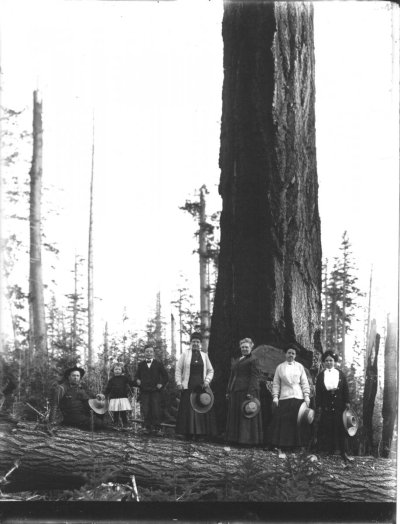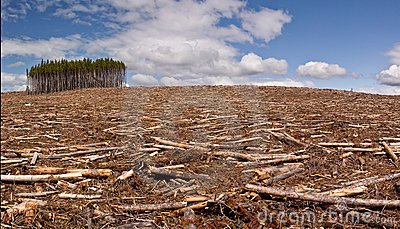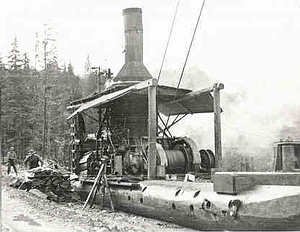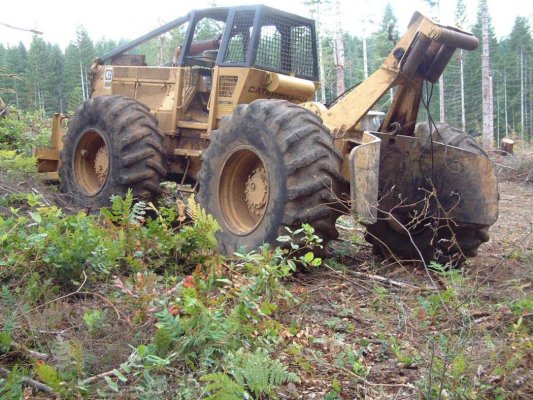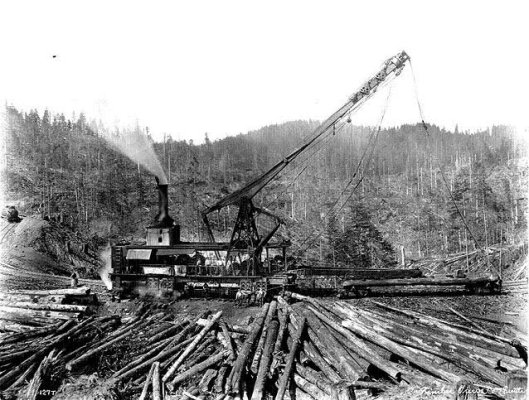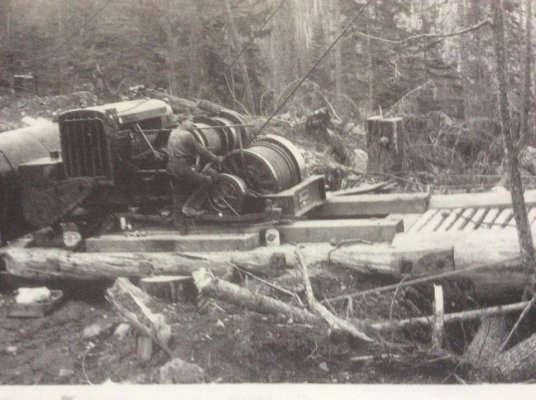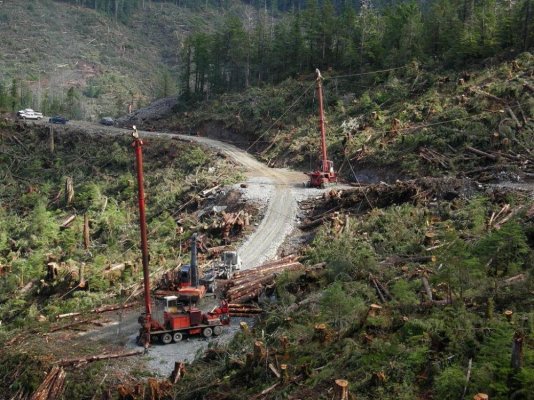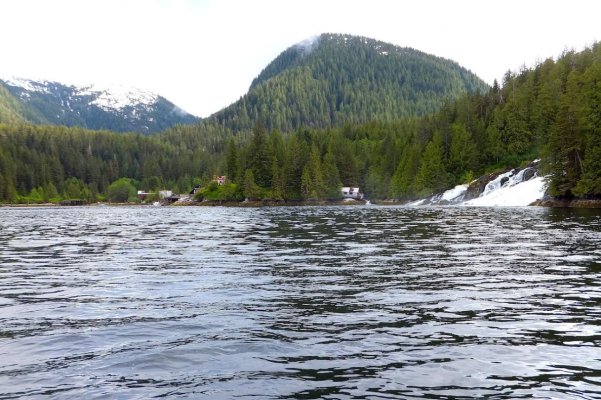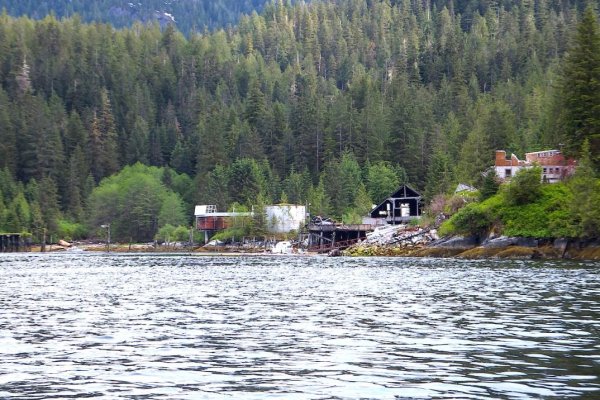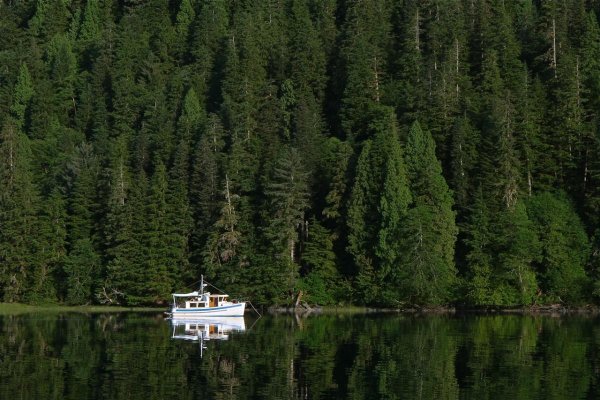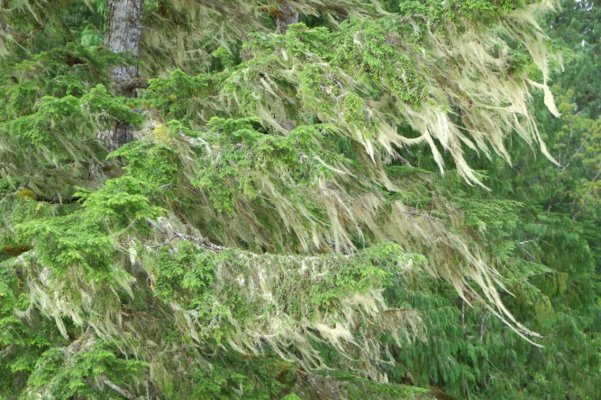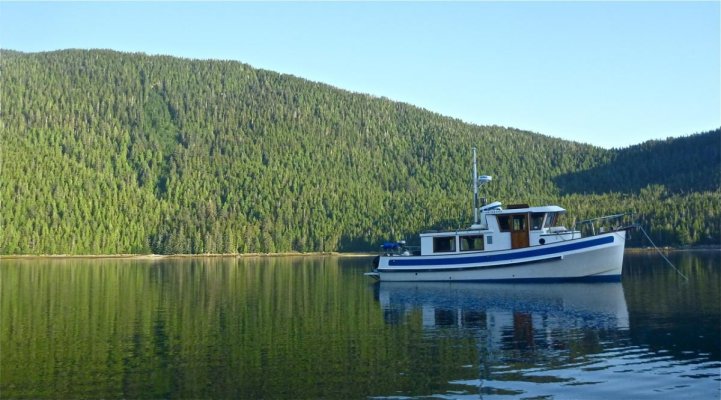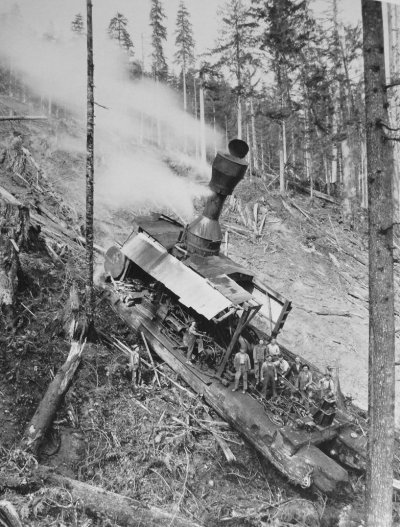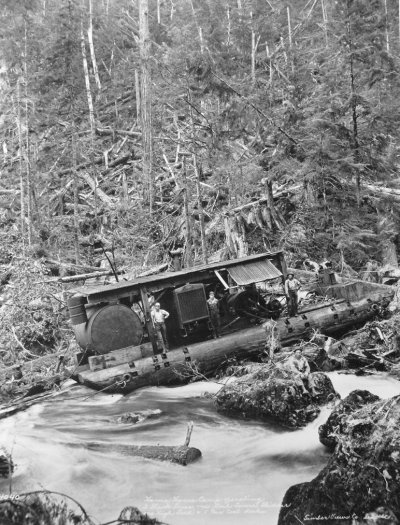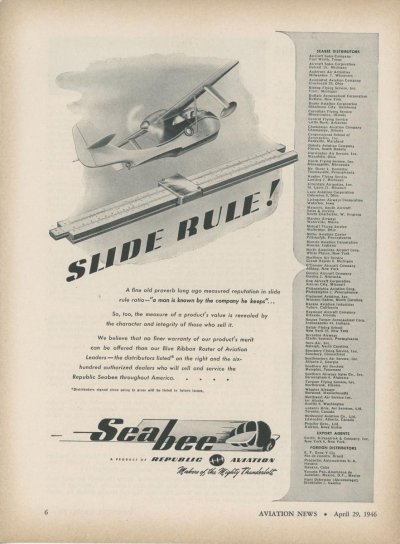I'm lucky on BC's north coast because things have only been logged once and have reseeded naturally (See photo #1 below). This makes for a more natural looking landscape, and not a uniform sized monoculture like a tree planted area or one that's been logged for the third time.
What looks like virgin forest up here to the untrained eye has probably been logged in the past. The easiest way to tell is to look along ridge lines, or far up the slopes, where there are fully mature cedar snags and well spaced trees draped with long ribbons of old mans beard lichen (see photo #2) Walking in the forest reveals massive stumps with notches cut in them for springboards, which were planks fallers used to stand on to get them above the flaring base of the tree...important when falling with hand saws or axes.
Helped my brother on a logging show for a short time several decades ago. Very steep, with a saddle in the middle. My brother was running the tower and I was the chokerman. A choker fell off so the guy I was working with blew stop & slack off the lines on the Talky-Tooter. I scrambled down into the saddle where my brother couldn't see me, reset the choker, and as I was running back to the safe spot the guy I was working with blew the go ahead. A chunk was picked up and thrown at me, hit me square in the lower back, threw me uphill, and I woke up later in a heap under a bunch of logs in a world of pain.
Some time later...the paramedics decided a helicopter was the best bet for getting me off the hillside. You don't know pain until you're strapped to a backboard with a back injury and feeling every vibration of a helicopter. Something like icepicks applied by sledgehammer. I welcomed it, and while biting down on a piece of blanket actually asked for more because the pain meant I wasn't paralyzed.
Apologize for Marin-esque long windedness

but all this logging talk sparked some pretty vivid memories.

